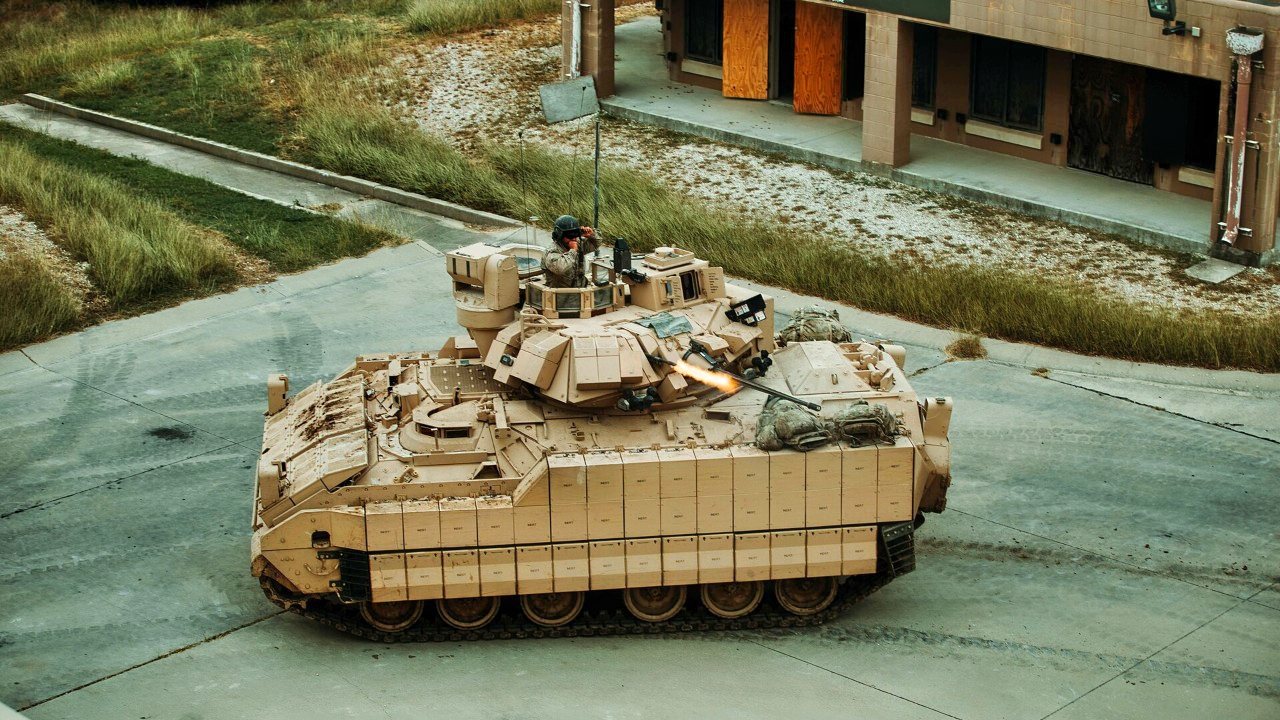XM30 Mechanized Infantry Combat Vehicle: Why the U.S. Army Needs This
The U.S. Army plans to replace the Bradley Fighting Vehicle (BFV) with the XM30, developed by American Rheinmetall Vehicles and General Dynamics Land Systems, with a prototype expected in late 2024.
Summary: The U.S. Army plans to replace the Bradley Fighting Vehicle (BFV) with the XM30, developed by American Rheinmetall Vehicles and General Dynamics Land Systems, with a prototype expected in late 2024. The BFV, in service since the 1980s, demonstrated capability but vulnerabilities in modern conflicts. The XM30 aims to offer transformative advancements in lethality, survivability, and upgradeability, incorporating a modular open system architecture for future tech integration. This new vehicle is part of the Army's response to evolving warfare demands, emphasizing greater survivability, enhanced firepower, and improved maneuverability, with plans for a hybrid electric powertrain marking a significant evolution in combat vehicle design.
XM30 vs. Bradley: Uplifting U.S. Ground Forces for Modern Warfare
The US Army will be replacing the Bradley Fighting Vehicle (BFV) with the XM30. American Rheinmetall Vehicles and General Dynamics Land Systems, the developers of the XM30, are scheduled to deliver a prototype in late 2024.
XM30: Replacing a legacy
The BFV has been in service since the 1980s. Designed to transport infantry or scouts under armor protection, the BFV can also provide covering fire sufficient to suppress enemy troops and armored vehicles. FMC Corporation designed the BFV, which debuted in 1981 with spaced laminate armor; 14.5-30mm all-around AP protection and explosive reactive armor for RPG protection; a 25mm M242 Bushmaster chain gun; two BGM-71 TOW anti-tank missiles; a 7.62mm M240C machine gun; and a Cummins VTA-903-T diesel engine capable of providing 600 horsepower. The BFV can reach 35 miles per hour and operate within a range of 250 miles.
The BFV has enjoyed a venerable service run. During Operation Desert Storm, the BFV proved capable at destroying Iraqi armored vehicles, even notching kills against T-72 tanks. But during the Iraq War, the BFV proved vulnerable to improvised explosive devices and rocket-propelled grenades – low budget attacks that Iraqi fighters employed regularly, with outsized effect.
Efforts to replace the BFV, which have been underway in some form since 1980, now seem to be taking shape with the XM30.
Introducing the XM30
American Rheinmetall Vehicles and General Dynamics Land Systems were awarded $1.6 billion for the contract to produce the XM30.
“The XM30 will replace the Bradley fighting vehicle, bringing new transformational capabilities to lethality, soldier-vehicle survivability, and upgrade ability beyond the physical and economic limits of the Bradley,” said Douglas R. Bush, assistant secretary of the Army, Acquisitions, Logistics, and Technology. “The modular open system architecture that the XM30 will allow new building technology to be added to the vehicles as that technology matures, ensuring an overwhelming advantage in any potential adversary competition.”
American Rheinmetall and GDLS are expected to develop two ballistic hulls, turrets, armor coupons, and digital model twins.
The Army is hoping that a new light tank and fighting vehicle will allow ground forces to augment their firepower, while improving troop mobility.
“Competition remain a vital aspect of the XM30,” Bush said. “The program opened the door for industry partners that are not traditional U.S. combat vehicle prime contractors, which allows for increased competition and innovation. This reduced the Army’s risk and increased our likelihood of success while balancing investments across the entire Army modernization enterprise.”
Why now?
After four-plus decades of service, why is the BFV suddenly on the way out? “in recent years, peer and near-peer competitors of the United States have significantly increased their combat vehicle capabilities,” Brigadier General Geoffrey Norman explained. “the character of warfare has changed, and our potential adversaries are bringing increased value to the battlefield.” And “the best way to respond is to ensure that our formations are equipped with infantry fighting vehicles, which can bring greater survivability, powerful lethality at standoff range and improved maneuver capabilities to the battlefield.”

The XM30 hasn’t been designed yet. But the new design is expected to emphasize sustainability and mobility – and is expected to feature a hybrid electric power train. According to Norman, the XM30 will be “transformational,” rather than just another “incremental improvement.”
About the Author: Harrison Kass
Harrison Kass is a defense and national security writer with over 1,000 total pieces on issues involving global affairs. An attorney, pilot, guitarist, and minor pro hockey player, Harrison joined the US Air Force as a Pilot Trainee but was medically discharged. Harrison holds a BA from Lake Forest College, a JD from the University of Oregon, and an MA from New York University. Harrison listens to Dokken.


